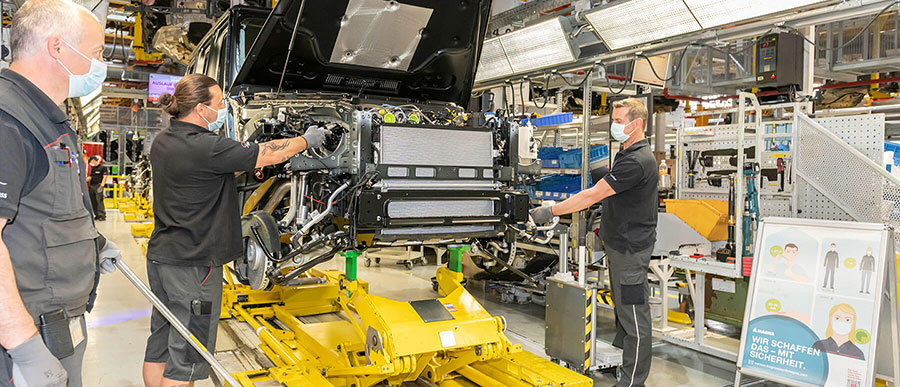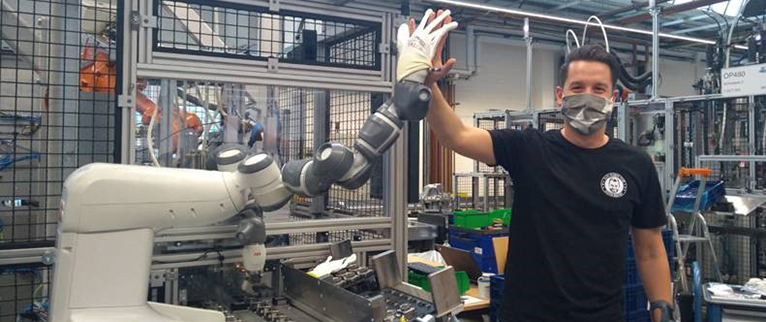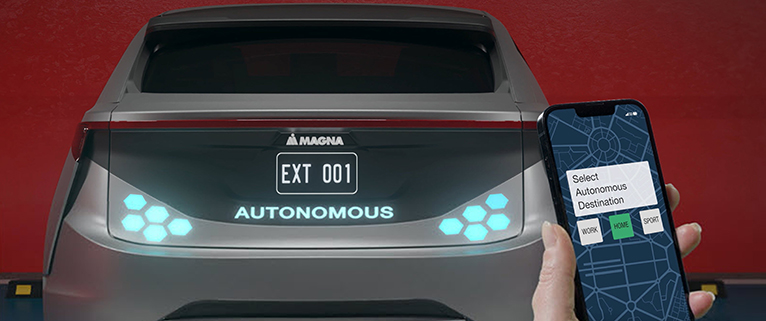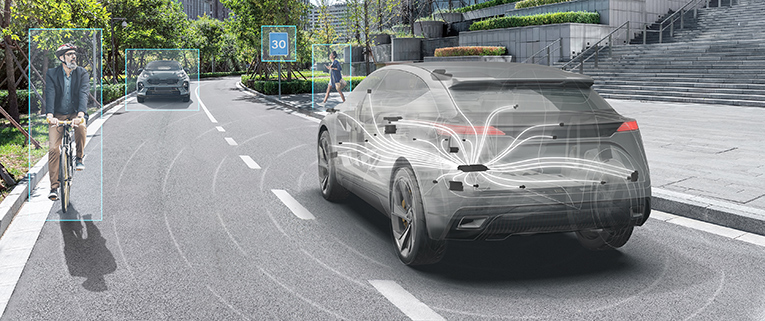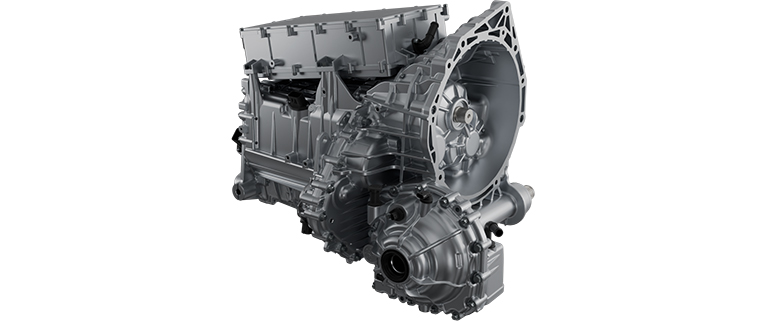Our History
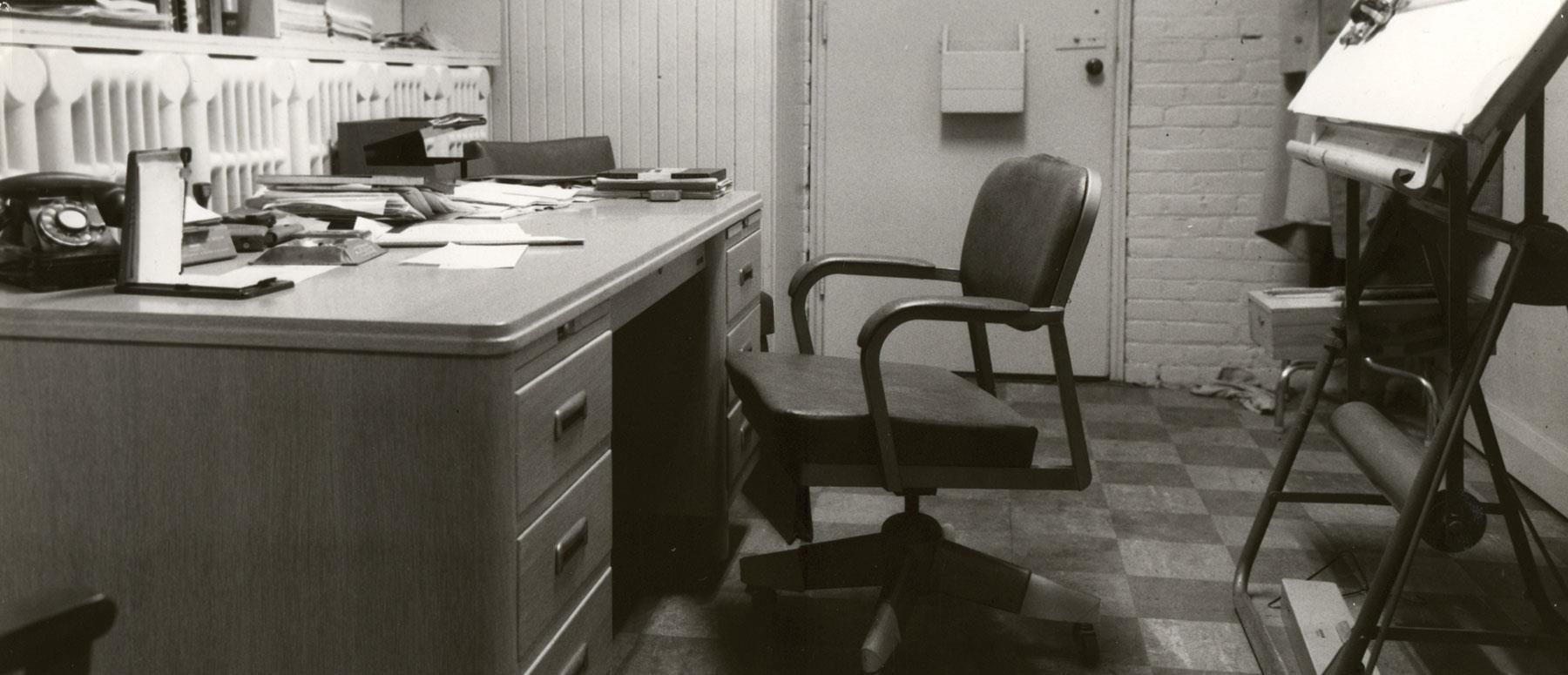
We are a company that began more than 65 years ago, launching from a garage with small stampings and big aspirations.
Today, we are a $42 billion company and one of the largest automotive suppliers globally, with 164,000 employees.
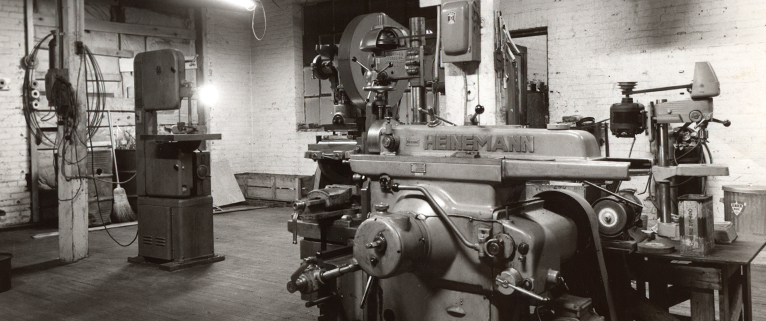
Setting Up Shop
Welcome to the 1950s, a decade of setting up shop for Magna.
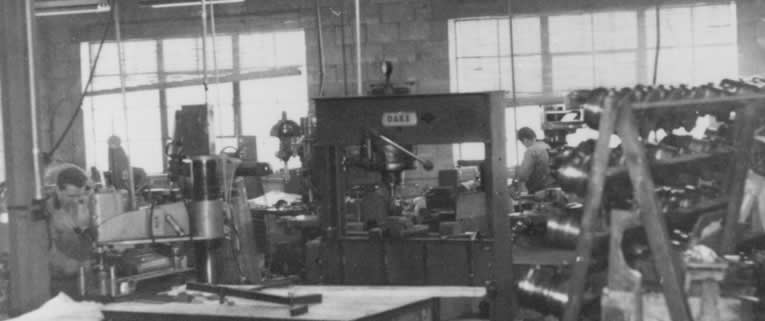
Frank Stronach opens a one-man tool and die shop in Toronto called Multimatic.
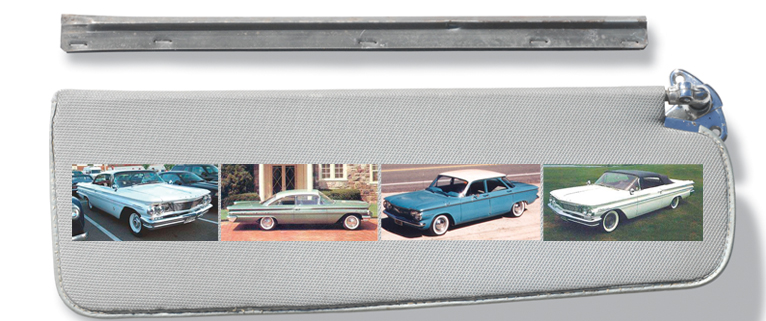
Multimatic receives its first part contract: an order from General Motors in Oshawa, Ontario to produce metal-stamped sun visor brackets.

Building the Foundation
Welcome to the 1960s, a decade of building the foundation for Magna. During this decade the company exceeded a million dollars in annual sales.

Magna Electronics Corporation Limited becomes a public company on the Toronto Stock Exchange under the symbol MG.
Multimatic opens its second plant in Richmond Hill, Ontario.

Canada and the US sign the historic Auto Pact, which removes tariffs on automobiles and automotive parts, Multimatic ships its first parts to the US - a drip rail for Ford Motor Co.

Multimatic merges with Magna Electronics Corporation Limited.
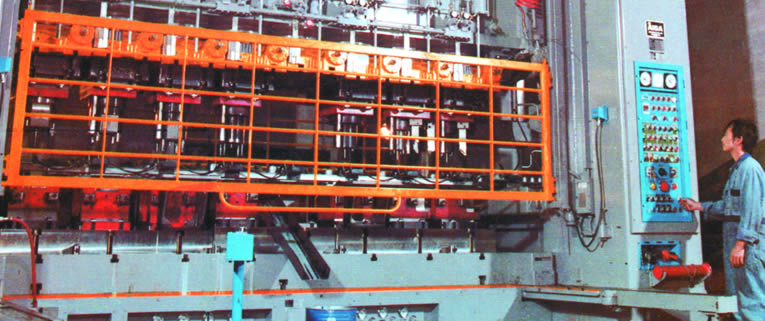
Diversification
Welcome to the 1970's, a decade of diversification for Magna. By the end of this decade the company exceeded $100 million US in sales.
Automotive operations expanded to include a greater number of stamped and electro-mechanical components.
Annual sales: $6.5 million US.
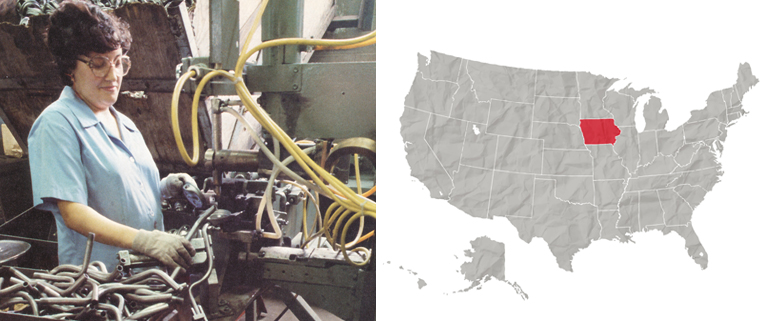
Magna opens its first US facility in Montezuma, Iowa manufacturing oil strainers.
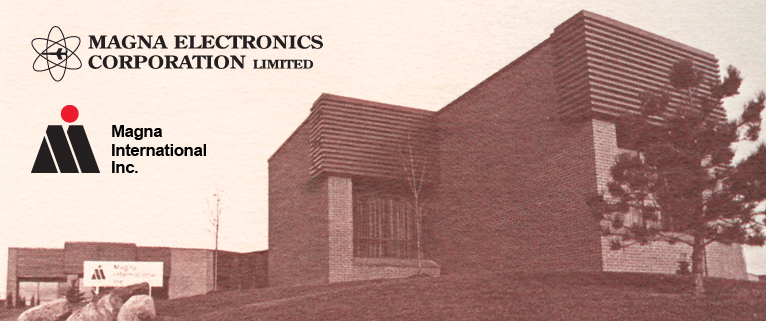
Magna Electronics Corporation Limited changes its name to Magna International Inc.
Magna opens its first headquarters in Toronto, Ontario.
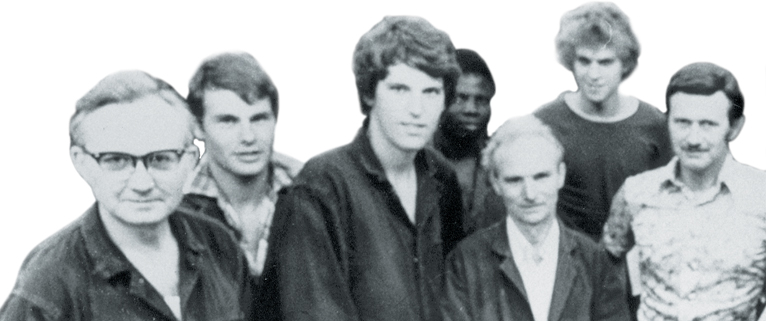
Magna introduces The Employee Equity Participation and Profit Sharing Program, which allows employees to have a share in the business.
From 1976 to 1979, Magna implements a major product diversification strategy and organizes its divisions into product groups.
Magna opens its second US plant.
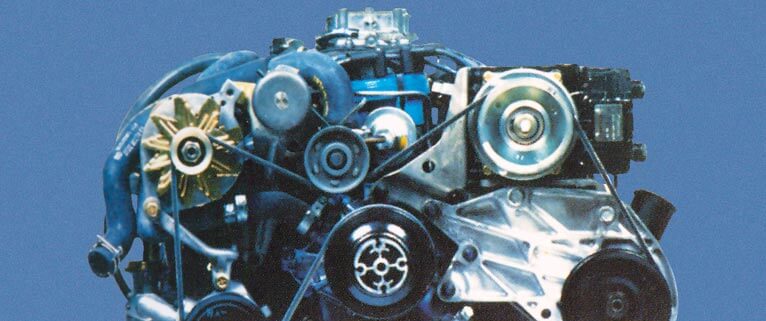
Magna develops the revolutionary single belt pulley system and enters the automotive plastics business.
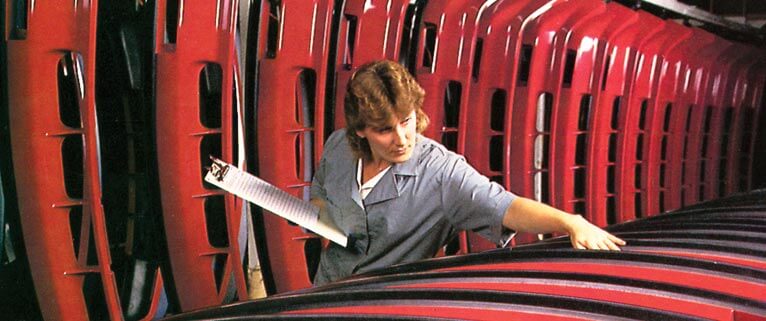
Continued Growth
Welcome to the 1980s, a decade of growth for Magna. The company started manufacturing reaction injection molded (RIM) bumpers and by the end of the decade the company exceeded one billion dollars in sales.
Annual sales: $119.6 million US.
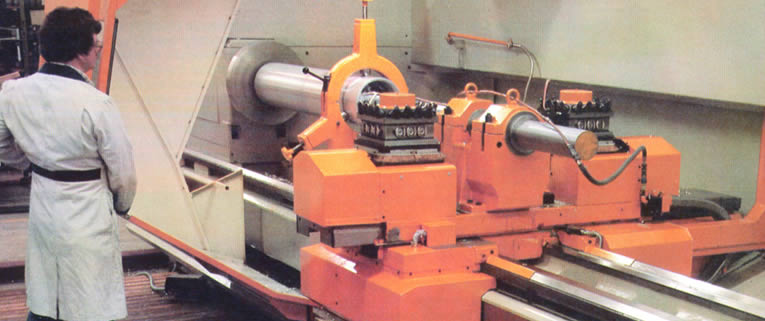
Magna sells its aerospace and defense operations.
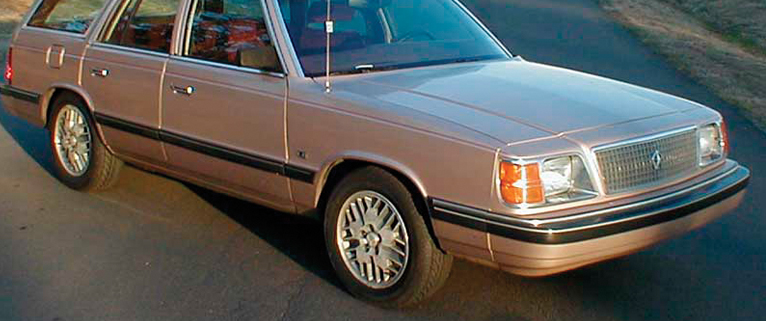
Chrysler's famous "K-Car" was one of the first to feature Magna's RIM bumpers.
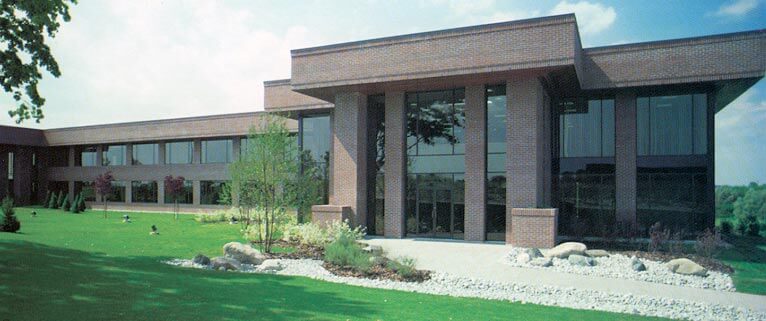
Magna develops an industrial campus and opens an employee park. The company moves to a new headquarters in Markham, Ontario.
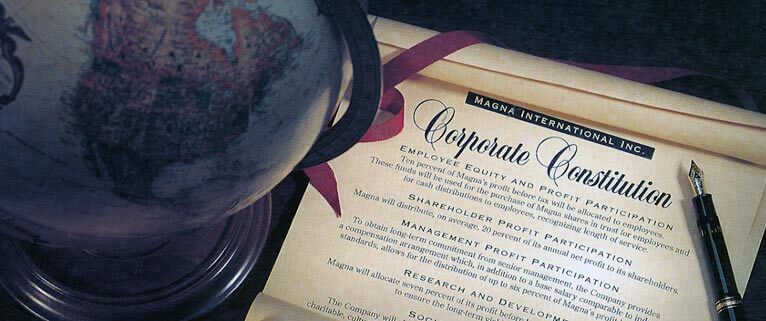
Magna formally adopts the Corporate Constitution, entrenching its previous long-standing commitment to guarantee the rights of employees, shareholders and management to share in the profits they help produce.
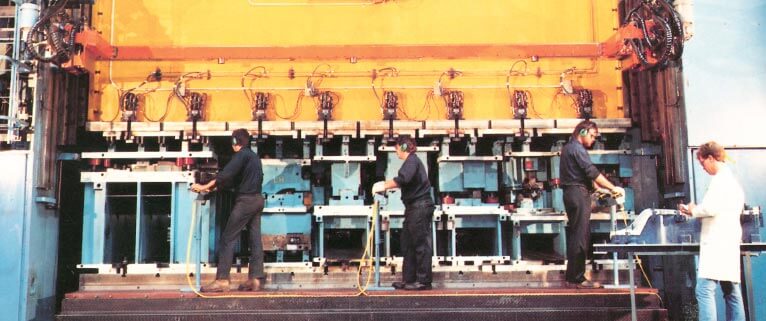
Magna wins a breakthrough contract to supply Class A exterior sheet metal for an American Motors vehicle.
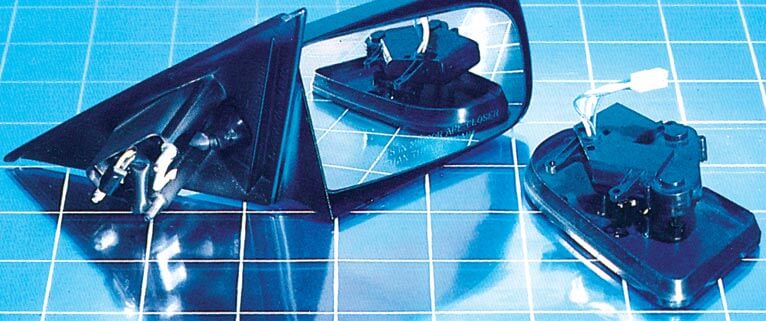
Magna forms Advanced Engineering Group to focus on designing modular vehicle systems.
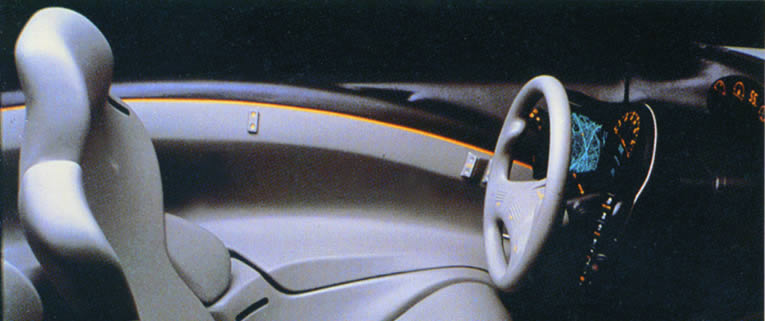
Magna organizes its manufacturing divisions into Automotive Systems Operating Groups to become full-service suppliers for many key systems of the automobile.
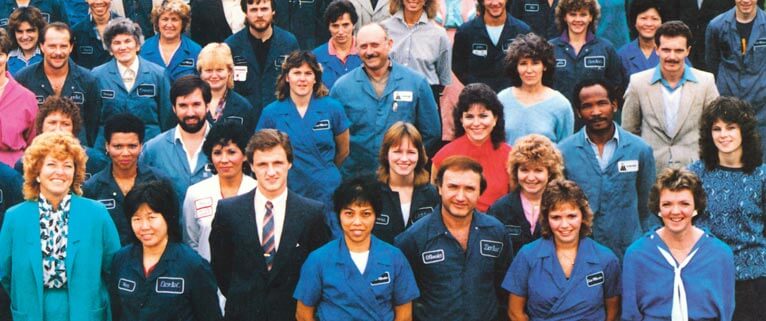
Magna forms the Tesma group to supply engine and transmission components and systems. The company also formally adopts The Employee's Charter, entrenching our previous long-standing commitment to the principles of workplace fairness, employee equity participation and profit sharing.

Magna co-designs and co-developes the integrated child safety seat, which the Smithsonian Institute recognized as one of the great innovations of the 1980s.

Expansion and Innovation
Welcome to the 1990s, a decade of geographic expansion and innovation for Magna. By the end of this decade the company exceeded $9 billion in sales. A Partnership Agreement was signed with Ford Motor Company and a Joint Venture, Conix, was formed to supply plastic and molded exterior components. We were awarded the first major program to supply "bolt-in" door modules incorporating all interior door hardware.
1990: Magna begins major restructuring to sell non-strategic operating divisions.
Annual sales: $1.4 billion US.
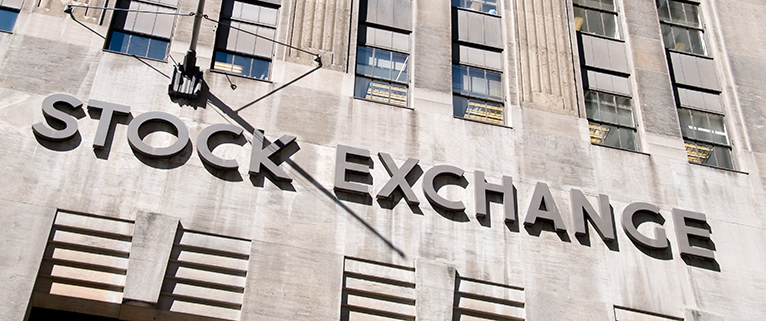
The New York Stock Exchange recognizes Magna as a publicly traded corporation.
Magna introduces Fairness Committees within its manufacturing divisions to establish and meet the needs of the workers.
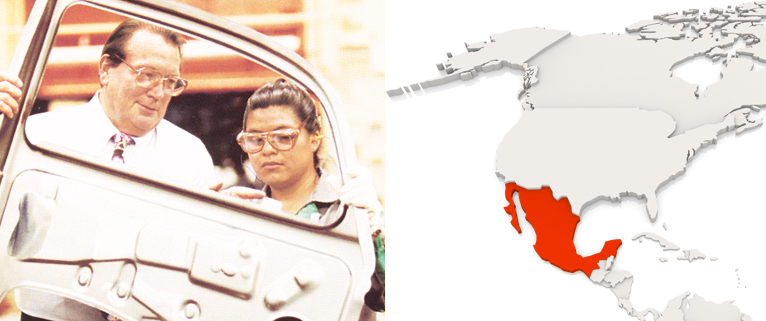
Magna opens a facility in Puebla, Mexico to supply stamped body panels for Volkswagen.
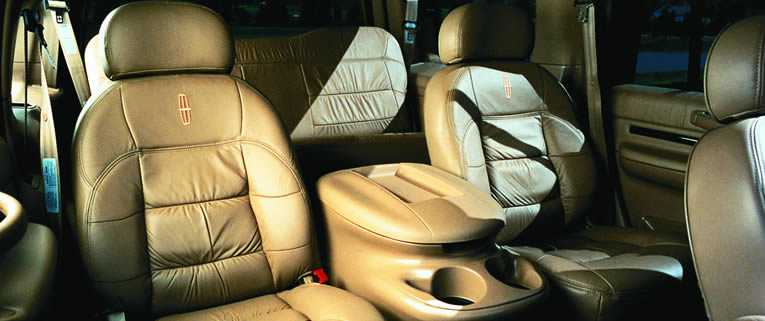
Magna announces a groundbreaking systems integrator contract to program-manage the complete interior and exterior systems integration of a vehicle.
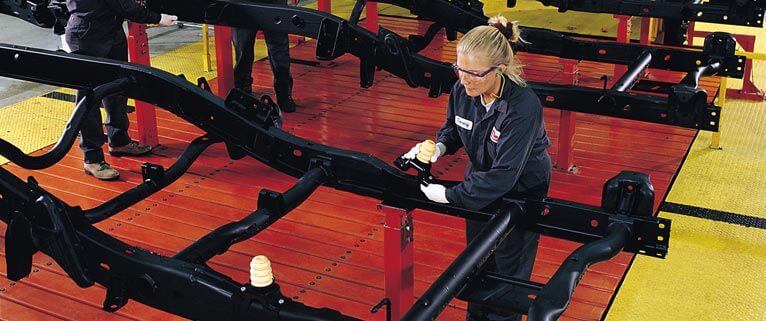
Magna implements a unique form of high-pressure hydroforming technology, a manufacturing process that utilizes water pressure to bend and form metal. Tesma International Inc., the engine, transmission and fuel systems group, is spun off as a separate public company.
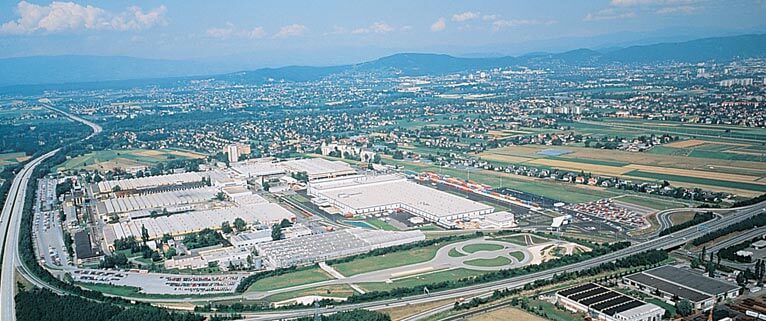
From 1996 to 1998, Magna undergoes a major European expansion, acquiring a number of European-based automotive systems suppliers.
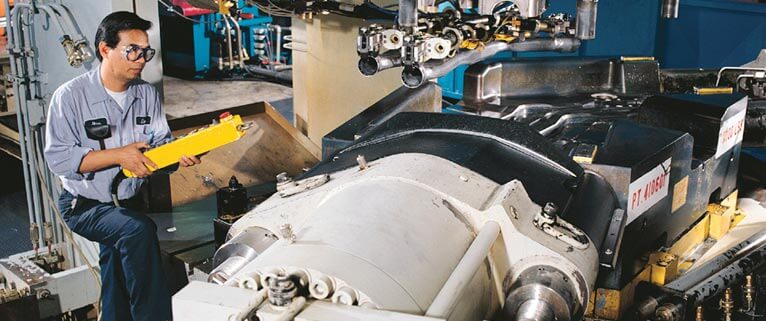
Cosma is awarded its first major hydroforming program to supply subframes for full-size pickups and sport utility vehicles; one of the largest industry contracts ever awarded. Magna Europe sales reach the $2 billion mark.

Decoma International Inc., Magna's plastic exterior systems group, is spun off as a separate public company. Magna acquires Steyr-Daimler-Puch, one of the world's leading automotive technology and engineering companies with complete vehicle assembly capabilities.
Magna moves to its current headquarters in Aurora, Ontario.
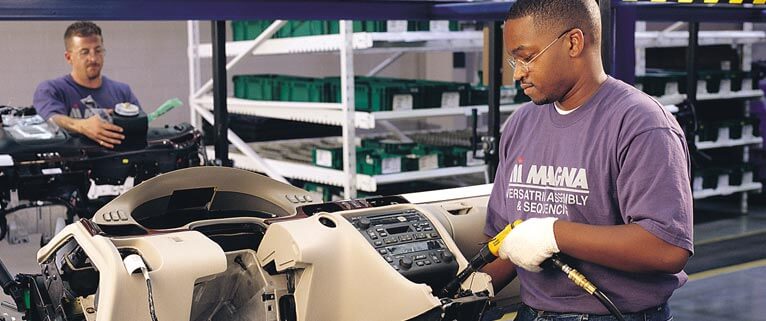
Forbes magazine names Magna the world's top auto parts company. Magna structures its operating groups along global product lines.
Magna's Board of Directors approves the establishment of a separate public company to hold its non-automotive businesses.
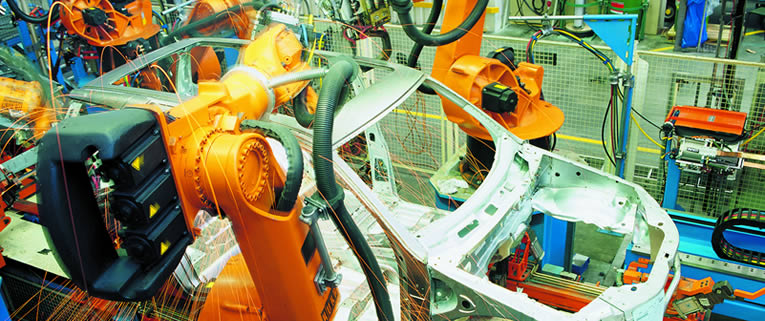
Evolution
Welcome to the 2000s, a decade of evolution for Magna. As the world became connected on a mass global scale at the start of the new millennium, Magna also evolved into a more global corporation with a more diverse product portfolio. During this decade, Magna exceeded $20 billion dollars US in sales and became the largest auto parts supplier in North America.
Annual sales: $10.1 billion US.
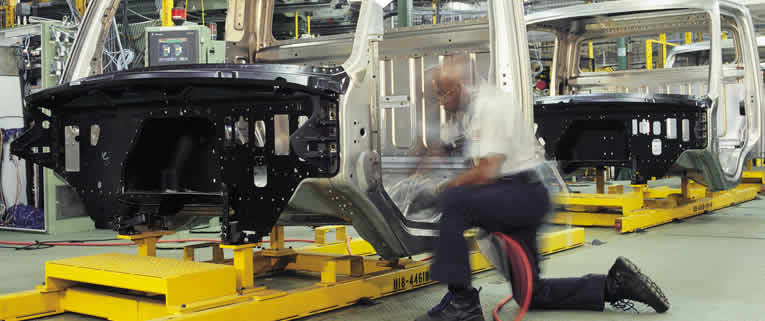
Magna announces the formation of the Magna Steyr group, a premier supplier of total vehicle engineering and one of the world's leading suppliers of niche vehicle assembly and vehicle concept development.
Intier Automotive Inc., Magna's interior systems group, spun off as a separate public company.
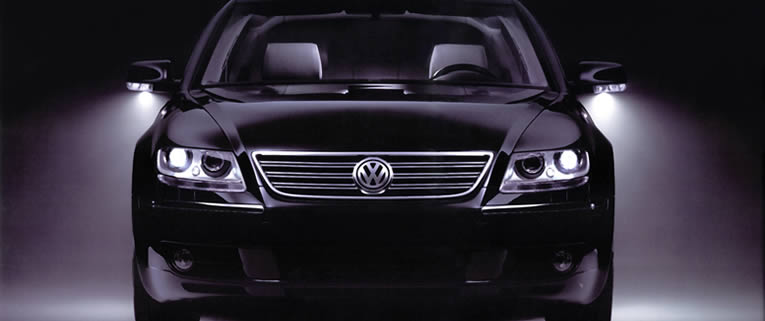
Magna acquires Donnelly Corporation, creating one of the world's leading exterior and interior mirror suppliers, with lighting, engineered glass systems and advanced electronics capabilities.
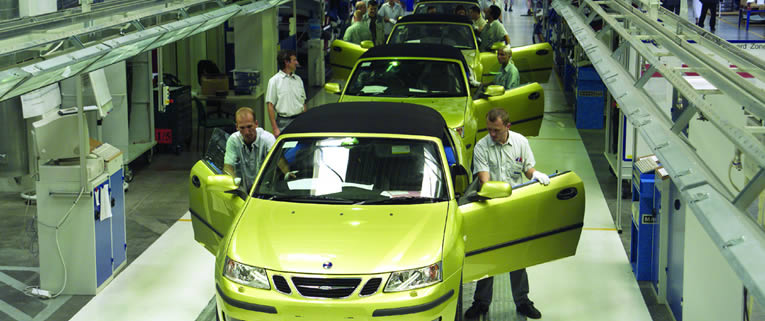
MI Developments Inc., the group holding substantially all of our automotive real estate, including Magna's former controlling interest in MEC is spun off as a separate public company.
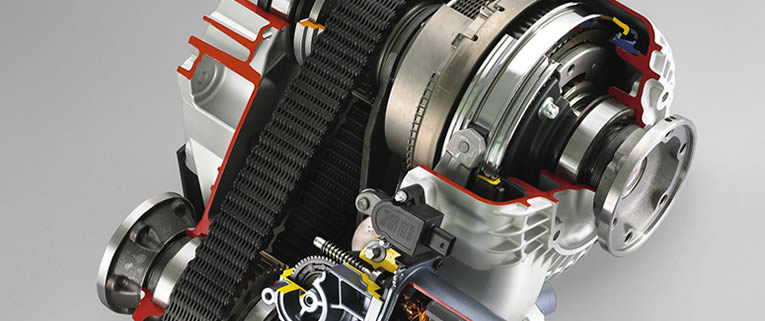
Magna acquires the worldwide operations of New Venture Gear, a DaimlerChrysler subsidiary specializing in the production of transfer cases and other drivetrain products.
Magna announces the creation of a new operating group, Magna Drivetrain, which focuses on the development and production of drivetrain technologies and all-wheel-drive systems.
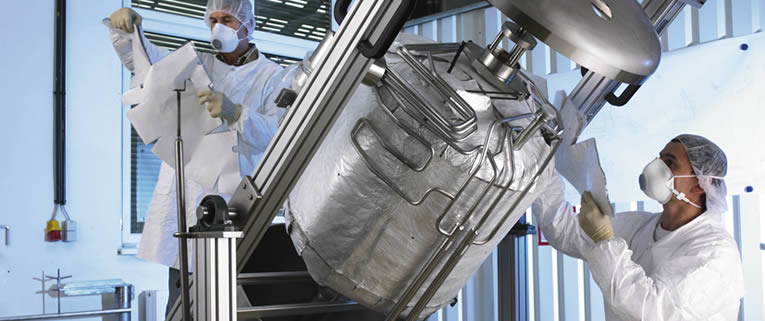
Magna completes the privatizations of its three public subsidiaries, Tesma International Inc., Decoma International Inc., and Intier Automotive Inc.
Magna announces the merger of Magna Drivetrain and Tesma to form Magna Powertrain.
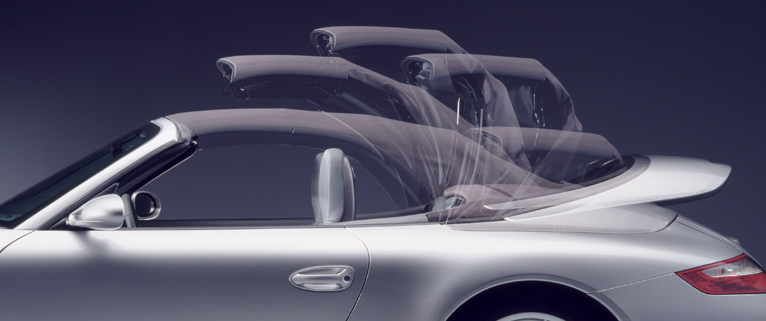
Magna acquires CTS, Porsche's car top systems subsidiary.
The first two Magna plants on the African continent start production.
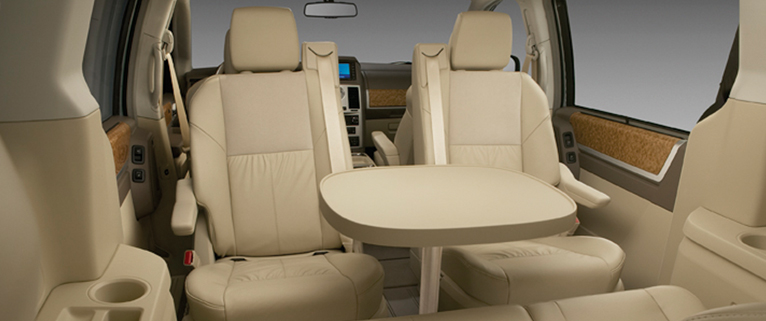
Magna celebrates its 50th anniversary in business and becomes the only non-OEM ever to receive a JD Power Gold award.
Magna co-develops the Swivel 'n Go seat system featured on the Chrysler Minivan. Magna signs the Framework of Fairness Agreement with the Canadian Auto Workers.
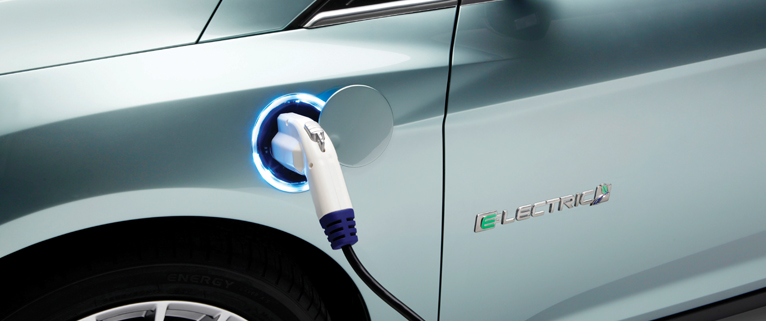
Magna announces the development of an electric vehicle and becomes the largest automotive parts supplier in North America on the basis of sales.
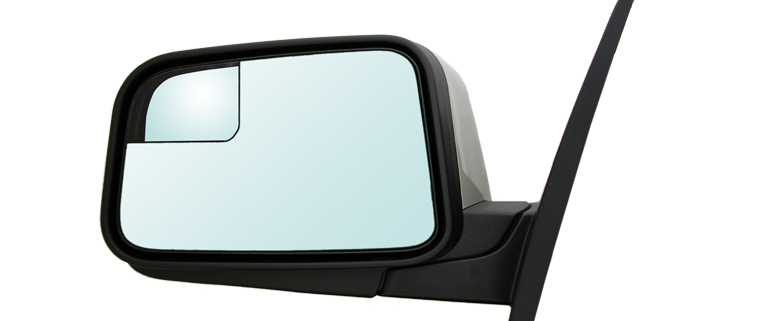
While a global economic crisis sharply lowers automobile production, Magna continues to be recognized as a top supplier by several customers, including Toyota, General Motors and Ford.
Magna Mirrors wins a 2009 Automotive News PACE Award for its BlindZoneMirror™ product.

Global Platforms
Magna continued to expand its presence globally during a time of rapid economic growth across many regions. A transition started to take shape through the decade, with autonomy, connectivity and new forms of mobility growing in importance. The evolution underscored Magna's commitment to deliver innovative and proven technology around the world to support its customers.
Annual sales: $23.5 billion US.
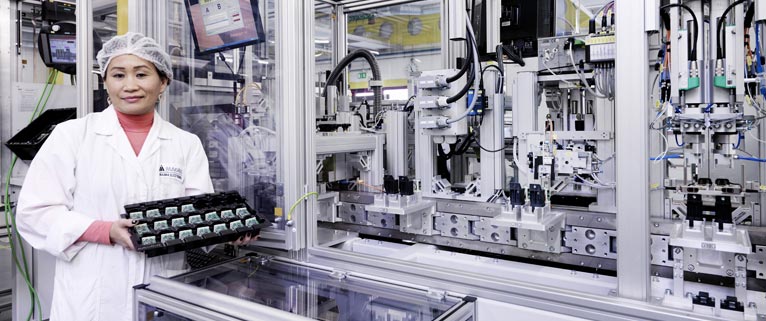
As China becomes the largest market in the world for automobiles, Magna continues to invest and grow there as well: Magna Powertrain breaks ground on a new facility in Tianjin, Magna Steyr relocates to a new engineering center in Shanghai, and Magna Exteriors and Interiors forms a JV injection molding and painting operation in Wuhu.
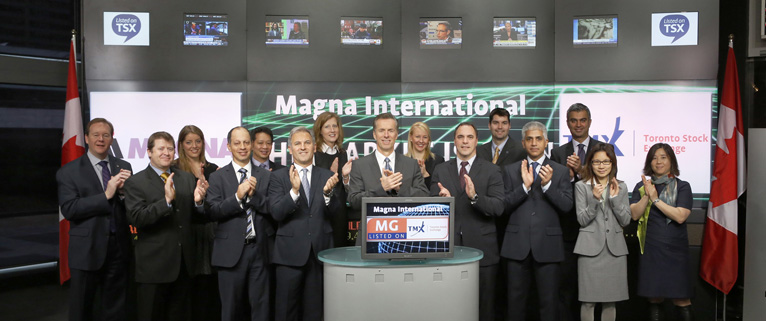
Magna achieves record sales on the strength of the markets in China and a resurgent U.S., and celebrates two milestones as a publicly traded company: 20 years on NYSE and 50 years on TSX. The company continues to diversify into related transportation industries, with new Kenworth and Peterbilt trucks including Magna seats, stampings and composite products; the acquisition of Vogelsitze for bus and train seating in Europe; and the debut of an innovative, lightweight frame for commercial trucks.
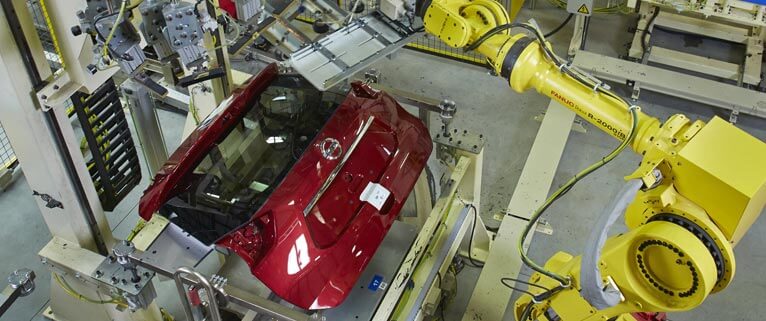
Magna continues to focus on developing game-changing products, processes and materials that help set the company apart from its competitors and create additional value in its customers' cars and trucks. Magna introduces many new innovations, including a lightweight, high-voltage battery housing made of die-cast aluminum, the first all-composite SUV liftgate, which is 30% lighter than the prior steel-based model, and an electronic door latch that uses no cables, rods or moving handles in the door.
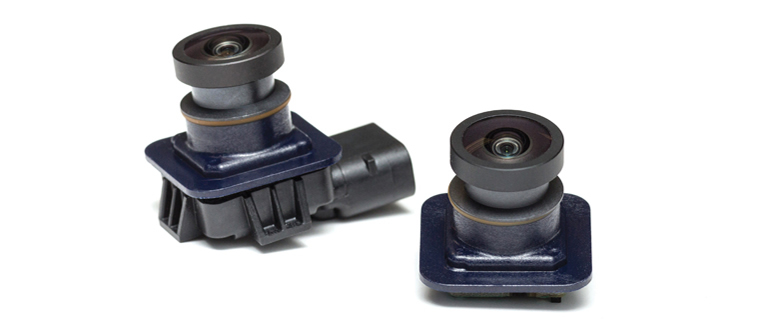
Magna expands its global engineering and manufacturing network in India, where the company announces new seating and body & chassis plants. Magna celebrates several manufacturing milestones across its product areas: 5 million axle drives, 10 million rearview cameras, and 50 million side door latches.
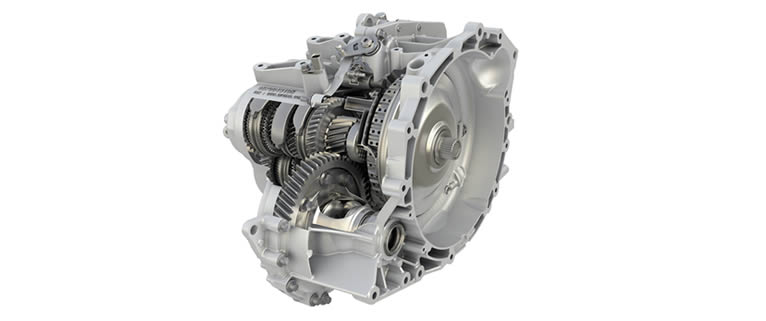
Magna divests its interiors business and acquires GETRAG Group of Companies, one of the world’s leading independent suppliers of automotive transmissions.
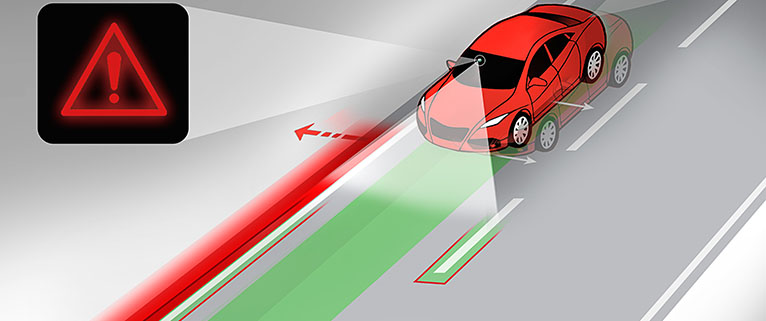
Magna continues to grow its Advanced Engineering Systems (ADAS) business, leveraging its position as the world leader in automotive camera systems.
Magna wins contracts with Jaguar Land Rover to assemble the I-Pace, the automaker’s
first-ever battery electric vehicle, and with BMW to assemble the 5 Series sedan.
Magna produces its 5 millionth transfer cases for BMW.
Magna posts record sales of $36.45 billion.
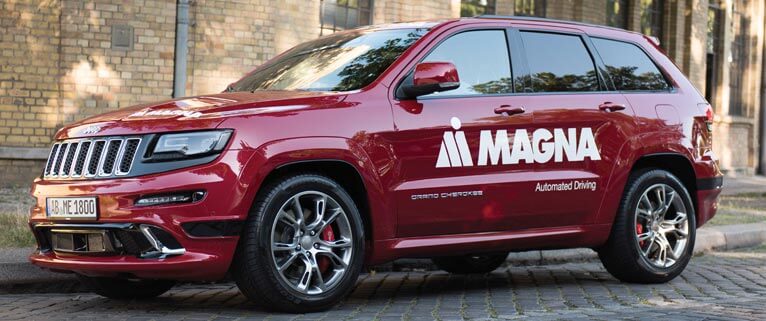
Magna celebrates its 60th anniversary and continues to lead through the relentless advance of technology, a changing regulatory environment and industry globalization.
Amid ongoing technology-fueled disruption, Magna rolls out unique solutions such as the MAX4 autonomous platform. There are great opportunities in store for the company as it continues to push the boundaries of lightweighting, electrification and autonomy.
Other highlights include ringing the bell to celebrate 25 years on the New York Stock Exchange and recognition by Forbes as a top U.S. and Canadian employer and a Global 2000 Top Multinational Performer.

A transitional, turbulent and exciting year for the global auto industry, at a time when electric vehicles, autonomous vehicles and trade agreements dominated the conversation. It was also a transformational year for Magna as the company continued to strengthen its role in developing the future of mobility.
Anticipating the road ahead, Magna continued to deliver new future-ready technology and products, helping the company remain competitive, win new business and expand its global footprint. Highlights included:
- Buying an equity stake in the ride-hailing business Lyft and launching a partnership to create autonomous drive systems
- Forming four joint ventures in China, including two with BAIC to bring a pure EV to market and to build EVs in Magna’s first complete vehicle assembly facility outside of Europe.
- Launching new business with various customers including seats and LiDAR with BMW, thermoplastic liftgates with FCA for their Jeep platform, and e-drive business in China for VW.
Magna’s resiliency, agility and financial stability enabled the company to cope with changing industry trends, shifting transportation landscape and ongoing political unrest. It’s our company of entrepreneurs and open-for-business mentality that continue to drive change in nearly every aspect of a vehicle, from seating to lighting to powertrain.
Some of Magna’s accomplishments throughout the year:
- We introduced our Freeform technology, an innovative seat trim material, that is a game-changer and a natural for ride-sharing vehicles, while giving designers more freedom.
- Won the largest transmission contract in company history from BMW Group, including hybrid variants which help reduce CO2 emissions
- Auto-qualified military grade RADAR and LED lighting and continued working to win business in both areas.
- Added the 2020 Toyota Supra to the complete vehicle assembly line-up and collectively contributed key elements to the sports car, including a composite space frame to reinforce the liftgate and the seats.
- Achieved awards and accolades for best-in-class quality and performance from multiple customers around the world.
- While production efficiencies and cost consciousness have been central to our operations, we have bolstered our overall sustainability efforts so that the comfort of our lives does not come at the expense of future generations that follow.
- Cultivating a more diverse and inclusive workforce that can continue to contribute their perspectives and talents to improve our organization.
2020 will be remembered as one of the most challenging and pivotal in Magna’s history, as the company grappled with the COVID-19 pandemic, helped lead the industry in safely restarting, and closed the year by naming a new CEO.
Looking back, with the challenges 2020 presented, Magna teams around the world pulled together and accomplished great things:
- Launched the ArcFox Alpha-T, the first vehicle to be assembled outside of Europe in our complete vehicle manufacturing joint-venture facility in China.
- Led the industry with our Smart Start Playbook as we put together guidelines for working safely in a pandemic.
- Signed agreements with Fisker that provide the framework for platform sharing and manufacturing cooperation for the Fisker Ocean electric SUV.
- Announced a joint venture with LG Electronics to develop powertrains for electric vehicles.
- Contributed to the fight against global climate change through our operations, products and commitment to sustainability.
- Expanded our diversity and inclusion efforts including a focus on under-represented talent, the launch of two Employee Resource Committees, and continuing to build a diverse supplier base, including women-, veteran- and minority-owned businesses.
- Executed a seamless transition to a new Chief Executive Officer as Swamy Kotagiri was named to succeed the retiring Don Walker on January 1, 2021.
Swamy Kotagiri took the reins as CEO Jan. 1, 2021, kicking off an action-packed year. While still navigating the COVID-19 pandemic and industry-wide chip shortages, Magna’s resilience and agility shined as the company continued to execute on its Go-Forward Strategy.
Some of Magna’s accomplishments throughout the year:
- Finalized joint venture with LG Electronics to establish LG Magna e-Powertrain, headquartered in Incheon, South Korea.
- Broke ground on new Michigan plant to support fast-growing electric vehicle market with battery enclosures for GM’s new GMC Hummer EV.
- Introduced Magna’s eBeam technology to help automakers electrify pickup trucks without sacrificing utility and functionality.
- Spotlighted new camera-based, driver monitoring system to help take the “distracted” out of driving.
- Contributed to the fight against global climate change through our operations, products and commitment to sustainability.
- Expanded vehicle engineering and manufacturing business with Fisker to include the full ADAS system, including ICON™ Radar, and EV platform sharing, as well as other key products.
- Implemented advancements in manufacturing automation and efficiencies with AI, robotics, and augmented reality.
- Targeted carbon neutrality in European operations by 2025 and globally by 2030.
- Expanded Employee Resource Communities to further diversity and inclusion efforts throughout the company.
2022 was marked by new opportunities and pivotal moments for Magna, as we continued to operate from a position of strength and stay at the forefront of mobility shifts, despite historic challenges in the industry and world.
Moving us forward is our 65-year heritage of innovation, core values and vision – and Magna teams who accomplished impactful goals in transformative times:
- Announced a $1.5 billion acquisition of Veoneer’s Active Safety business, positioning Magna to become a top ADAS provider in the world.
- Introduced Breakthrough Lighting technology, which changes the way light is used as a styling and communication element in vehicles.
- Expanded growth in Etelligent powertrain systems that offer a modular approach to electric drivetrains, including EtelligentForce our first fully electric 4WD.
- Introduced first to market technology with our rear thermoplastic swing doors.
- Won our first business awards for our industry first driver and occupant monitoring system – integrated into the rear-view mirror of the vehicle.
- Started production of our first battery enclosures – a technology where we expect sales of almost 1.5 billion USD by 2027 due to the rapid growth in electrification.
- Entered the fast-growing micromobility and battery-swapping sectors through investment in India’s e-scooter startup Yulu, collaborated with Cartken on side-walk autonomous last-mile delivery robot, and introduced Magna’s first all-electric autonomous robot specific to on-road delivery.
Our continued focus and Operational Excellence enabled us to unlock opportunities in new business models and markets as we continued to shift our portfolio in 2023 toward megatrend areas, such as electrification, ADAS and new mobility.
With our global scale, we are continuing to secure new business, experiencing growth, and further solidifying our position in product areas that align with the Car of the Future.
In spite of macroeconomic challenges, our teams continued to execute our Go-Forward strategy and build on our competitive advantage as a mobility technology company.
Significant achievements included:
- Completed a $1.5 billion acquisition of Veoneer’s Active Safety business, broadening Magna's ADAS sensor and full systems capabilities, including radar, camera, ADAS ECU and driver monitoring.
- Introduced Breakthrough Lighting technology, which changes the way light is used as a styling and communication element in vehicles.
- Announced our most ambitious environmental commitment to date: to achieve Net-Zero emissions by 2050, an important step in contributing to the global fight against climate change.
- Achieved our commitment to reduce our corporate energy intensity by 10% in all of our manufacturing facilities, with a target of 20% reduction by 2027.
- Announced a long-term supply agreement with leading semiconductor manufacturer onsemi, securing Magna’s access to silicon carbide microchips to be used in our future eDrive systems.
- Launched our groundbreaking Driver Monitoring System with a major European automaker.
- Debuted our modular and scalable Energy & Motion Control technology that can increase EV range by up to 90 miles, reduce emissions by 13-38%, improve safety, and enhance driving performance.
- Enhanced our automated driving capabilities by joining NorthStar – Telia Sweden and Ericsson’s 5G innovation program for industrial enterprises.
- Introduced the new EcoSphere product family, our industry-first, 100% melt recyclable foam and trim seating solutions.
- Launched our revolutionary SmartAccess power door system with first-to-market Haptronik motion control.
- Won new business from General Motors to supply battery enclosures on the all-new 2024 Chevrolet Silverado EV.
- Expanded our presence in the value chain through the LG Magna e-Powertrain joint venture by starting production in a new facility in Mexico and announcing the construction of an additional facility in Hungary to support continued growth in the EV market.
- Won a high-volume contract with a Europe-based Global Premium OEM to supply its new eDrive system for 2027 model SUVs and sedans.
By staying committed to systems thinking and Operational Excellence, we seized opportunities to explore new innovations and markets, all while solidifying our leadership on a global scale.
Our teams continued to execute on our strategy to achieve business success while also navigating complex geopolitical landscapes.
We continue to be recognized for Magna’s ability to drive innovation while popularizing groundbreaking products and processes.
Significant 2024 achievements include:
- Secured our first award for a Dedicated Hybrid Drive (DHD) Duo system with a leading Chinese OEM.
- Won a contract to deliver Magna’s reconfigurable seating system to a Chinese OEM.
- Named a General Motors Supplier of the Year at GM’s 32nd annual Supplier of the Year with recognition in five categories across four product areas – body & chassis, exteriors, powertrain, and seating – bringing the company’s total to 30 GM Supplier of the Year awards over the last five years.
- Won a 2024 Automotive News PACE Award for Magna’s Integrated Driver & Occupant Monitoring System.
- Received multiple Automotive News PACEpilot Innovation to Watch recognitions.
- Joined General Motors and consulting firm Wipro in developing SDVerse, a B2B sales platform for buying and selling automotive software.
- Awarded a contract from a North America-based OEM to supply a specialized primary rear eDrive system for one of the company’s high-end niche vehicle platforms.
- Introduced our next-generation 800V eDrive solution that sets new standards in efficiency, power-to-weight ratio and torque density.
- Debuted a breath- and camera-based pre-development technology designed to combat impaired driving.
- Entered two teams in the 2024 Rebelle Rally, a grueling, all-women rally competition.



